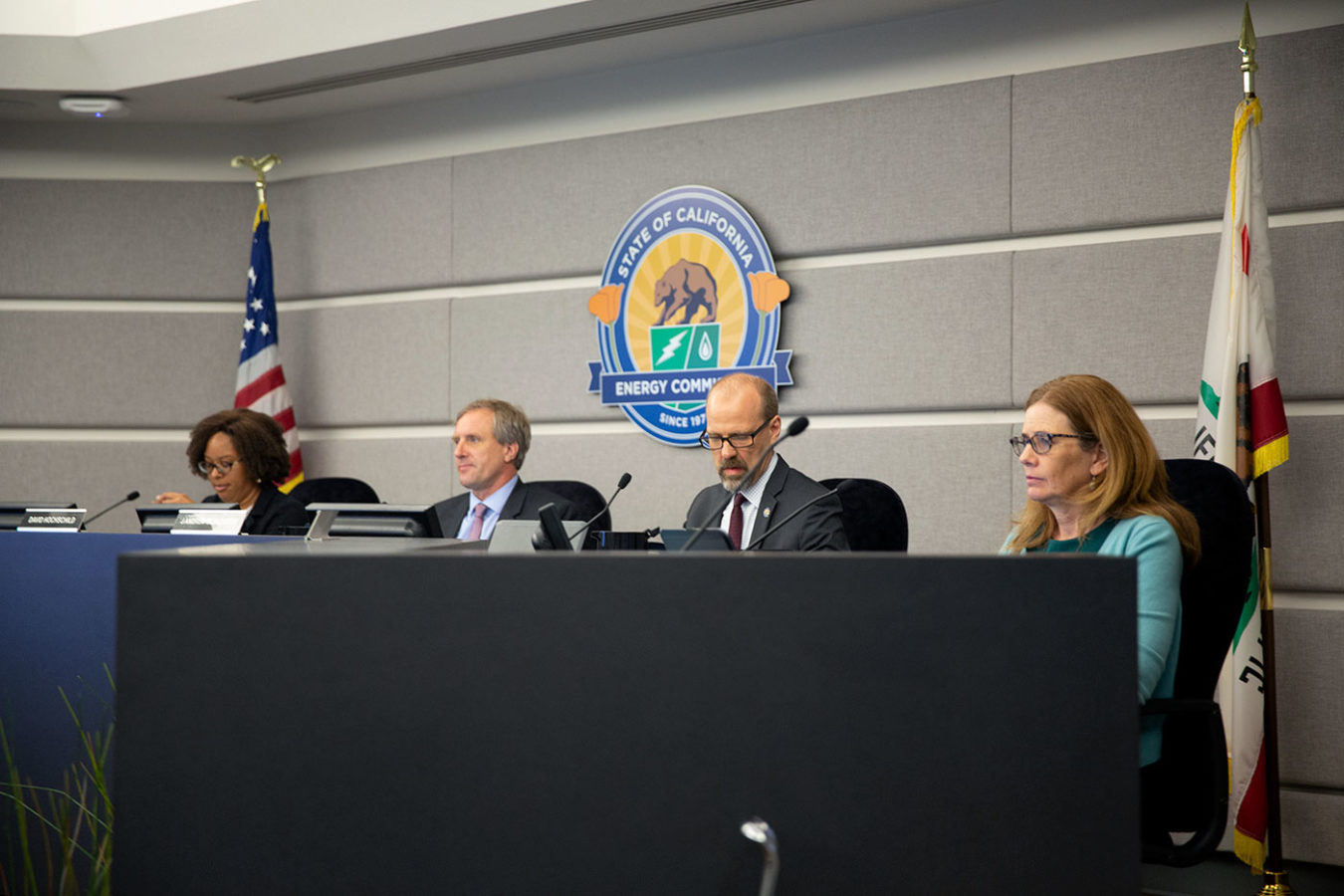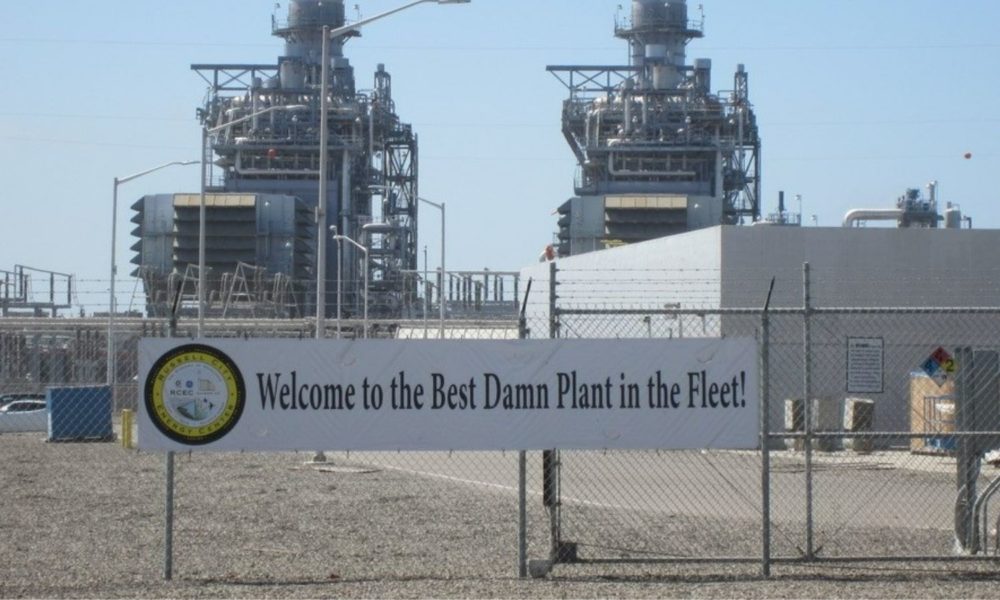Two years ago, I went on a tour of the Russell City Energy Center, a natural gas power plant in California.
Two months ago, the power plant exploded, raining hunks of metal down on the surrounding neighborhood.
How did this relatively new and technologically advanced gas plant fail so catastrophically? Why is California racing to get this power plant back online? And what does this situation teach us about California’s energy challenges?
First, the tour. Then I’ll get to the explosion and its aftermath.
The tour: “the best damn plant in the fleet”
When I toured the power plant two years ago, I was impressed. For a gas plant, it was truly state-of-the-art. Built in 2013, Russell City Energy Center is a combined cycle power plant with two gas turbines and one steam turbine; the two gas turbines generate electricity by burning gas, while the steam turbine generates electricity with the waste heat from the gas turbines. The process of capturing waste heat to generate additional electricity makes the plant much more efficient, approximately 55-65% overall.
The plant is also equipped with advanced emission control technologies: low NOx burners and a selective catalytic reduction system to reduce air pollution emissions, particularly oxides of nitrogen (NOx). For a plant that burns fossil fuels, this is about as good as current technology can get; however, it’s not even close to being as clean as renewable energy.
(Don’t forget: natural gas power plants are not clean! They produce significant amounts of global warming emissions and still produce air pollution even when advanced emission control technologies are in use.)

But there are a lot of combined cycle power plants out there with relatively advanced emission control technologies, so that’s not what made this plant special.
Russell City also has features that make it more flexible and more useful for the grid. For example, certain parts of the plant can be kept warm by what are essentially big electric blankets, and this makes the plant more flexible by allowing it to ramp up to higher levels of electricity generation more quickly. In addition, the power plant recently added black start capabilities, which allows the plant to start back up even when the grid is offline. (Yes, it turns out that gas plants need electricity to generate electricity, so Russell City installed backup batteries to give it the boost it would need to start on its own.)
And that’s not all. Even my wife, who is an academic specialized in water treatment systems, wanted to come along on the tour because the most advanced aspects of this power plant are actually its water systems. The plant uses up to four million gallons of water per day for cooling, but all of that water is treated wastewater, provided by the water treatment plant right next door. Russell City uses a couple additional processes to clean up the treated wastewater before using it in the power plant, then the really impressive part is that they have a zero liquid discharge system. So instead of discharging the water used by the power plant into the sensitive San Francisco Bay ecosystem, they have processes in place that essentially concentrate all the contaminants in the water then boil off the residual water until all that remains is solid waste (which is then sent to a landfill).
At the end of the tour, I stopped to take a picture of the sign at the entrance to the plant that read, “Welcome to the Best Damn Plant in the Fleet!” I also remember one of my colleagues telling me, “If we need some gas plants for a little while still, they should all be like this: the best of the best.” And while I think it’s definitely more complicated than that, I do think there’s a little bit of truth there.
But wait. This state-of-the-art gas plant, aka “the best damn plant in the fleet,” exploded two months ago… pardon my acronym, but WTF?
The explosion: cause unknown
Just before midnight on May 27, 2021, something went horribly wrong when part of the Russell City Energy Center exploded. Thankfully, no one was hurt by the explosion (or the ensuing fire) even though the explosion catapulted large hunks of metal hundreds of feet. Through sheer luck, the shrapnel didn’t hit any people or significantly disrupt the operation of critical water infrastructure right next door. However, there were some close calls: one hunk of metal pierced the roof of an unoccupied trailer at a navigation center for Hayward’s homeless residents and melted the carpet.
What caused the explosion? Multiple investigations are still underway, but initial statements from Calpine (the company that owns the power plant) pointed towards “a mechanical event inside the steam turbine generator compartment.” If that sounds like a vague and generally unhelpful explanation to you, then we’re on the same page!
But it does give us one important piece of information: the part of the plant that exploded was the part that generates additional electricity using the waste heat (in the form of high pressure steam) from the gas turbines. So, we at least know which part of the plant is broken.
The aftermath: controversy over restarting the plant
As you might have guessed, this catastrophic explosion caused extensive damage to the power plant, rendering the entire facility inoperable. However, only a week after the explosion, Calpine asked the California Energy Commission (CEC) for permission to make a few temporary modifications in order to safely restart the plant. Since the explosion apparently didn’t damage the gas turbines at all, Calpine wanted to install equipment that would allow the gas turbines to operate and completely bypass the damaged steam turbine. (For you energy nerds out there, that effectively turns what was a combined cycle power plant into a simple cycle or “peaker” power plant.)
The plan to restart the power plant was not without controversy. The power plant is located in the city of Hayward, and both the city and its community members fought back. The city argued it was premature to restart the power plant without conducting an investigation into the exact cause of the explosion and without studying the potential impacts on local air quality (which has been a controversial issue since the plant’s beginnings).
The city’s concerns about air pollution are not to be taken lightly, but it’s also by no means a simple issue. Because the plant will effectively be operating as a “peaker” plant, it seems likely that the plant will be dispatched for fewer hours, so it will run less and emit less air pollution. However, it’s also possible that the plant will start and stop more frequently, which produces more air pollution emissions than steady-state operation and could drive up emissions. All things considered (including the findings of a related analysis I conducted on power plant emissions), I suspect that overall emissions will not increase. But power plant dispatch is complicated, so it’s hard to say with certainty.
The city’s other concern was with restarting the plant before fully understanding the cause of the explosion. The city was particularly worried for the safety of the surrounding community because, as they put it, a “catastrophic explosion should not occur at such a young facility.” And I totally agree–the plant is only eight years old, so something obviously went very wrong, and it seems prudent not to restart it until we’re positive that the issue that caused the explosion in no way affects the parts of the plant that would resume operation.
But there’s another powerful force at play here.
California’s grid is currently in a precarious position, with barely enough generation capacity to get the state through the summer heat. The CAISO, the grid operator in most of California, has already had one close call, and they’ve been doing everything in their power to line up additional electricity generation for this summer.
Wanting the Russell City Energy Center back online ASAP, the CAISO threw in their support for the temporary power plant modifications that would allow the plant to come back online to provide 300-350 MW of capacity, roughly half of its 600 MW nameplate capacity. While 300-350 MW is not that much capacity in the grand scheme of things, when California experienced rotating power outages last August, the CAISO was only 500-1,000 MW short. So an extra few hundred megawatts could actually be the difference between a close call and more rotating power outages.
The CEC was faced with two bad choices: expedite the return to service of a power plant that had just exploded for reasons still unknown, OR keep the plant offline and jeopardize state-wide grid reliability. Ultimately, convinced by the prospect of more rotating power outages this summer, the CEC approved Calpine’s request to make temporary modifications that would bring the power plant back online ASAP.

Some parting thoughts
California is in a bad spot right now. Because grid conditions are so tight and the state barely has enough power to get through the summer, California officials are pulling out all the stops to prevent rotating power outages from reoccurring. For example, Governor Newsom has gotten into the bad habit of waiving air pollution requirements, allowing backup generators (e.g., diesel backup generation at data centers) to run every time grid conditions get tight. Now, California regulators are rushing to get the Russell City Energy Center back online despite a massive and still unexplained explosion at the power plant only two months ago.
There is a light at the end of the tunnel: California regulators recently mandated the addition of a huge amount of clean generation capacity to the grid. When those resources come online, the state’s grid should be in a much better position. But it’s going to take at least a few years for the bulk of those resources to get built.
Until then, California is faced with nothing but bad choices. California officials are stuck choosing one of the bad options and hoping for… something better than the worst.

